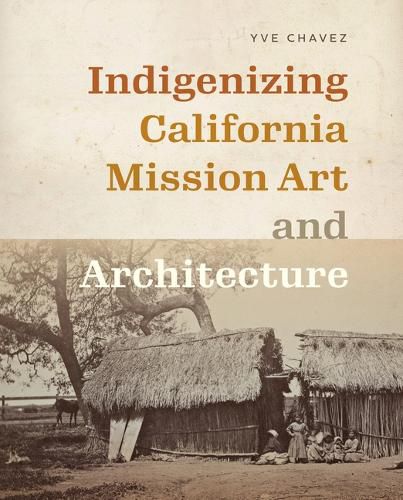Readings Newsletter
Become a Readings Member to make your shopping experience even easier.
Sign in or sign up for free!
You’re not far away from qualifying for FREE standard shipping within Australia
You’ve qualified for FREE standard shipping within Australia
The cart is loading…






Examines how native artists kept their culture alive by creatively adapting under colonial rule
Between 1769 and 1823, the Franciscans established twenty-one missions in California, colonizing the ancestral territories of many Native communities between present-day Sonoma and San Diego. In Indigenizing California Mission Art and Architecture, Gabrieleno Tongva scholar Yve Chavez highlights how these communities preserved their cultural practices amid colonial oppression. Rooted in Chavez's ancestral homeland and the neighboring Chumash region in coastal Southern California, her book focuses on Mission San Gabriel, Mission San Buenaventura, and Mission Santa Barbara. Recasting these sites as spaces of Native cultural heritage, Yve Chavez examines how Indigenous artists resisted assimilation while accommodating foreign ideas into their established practices.
Drawing on Indigenous knowledge and art historical research of performance and regalia, basketry, sculpture, and architecture, Chavez demonstrates how Native artists navigated colonial power structures, ensuring the survival of their customs during the mission era and beyond. Rather than replacing Indigenous identity, the missions became spaces through which Native people asserted their connection to the landscape and its resources. This analysis not only recasts mission art and architecture within an Indigenizing framework but also serves as a vital resource for understanding the ongoing significance of these sites for the descendants of mission survivors.
$9.00 standard shipping within Australia
FREE standard shipping within Australia for orders over $100.00
Express & International shipping calculated at checkout
Examines how native artists kept their culture alive by creatively adapting under colonial rule
Between 1769 and 1823, the Franciscans established twenty-one missions in California, colonizing the ancestral territories of many Native communities between present-day Sonoma and San Diego. In Indigenizing California Mission Art and Architecture, Gabrieleno Tongva scholar Yve Chavez highlights how these communities preserved their cultural practices amid colonial oppression. Rooted in Chavez's ancestral homeland and the neighboring Chumash region in coastal Southern California, her book focuses on Mission San Gabriel, Mission San Buenaventura, and Mission Santa Barbara. Recasting these sites as spaces of Native cultural heritage, Yve Chavez examines how Indigenous artists resisted assimilation while accommodating foreign ideas into their established practices.
Drawing on Indigenous knowledge and art historical research of performance and regalia, basketry, sculpture, and architecture, Chavez demonstrates how Native artists navigated colonial power structures, ensuring the survival of their customs during the mission era and beyond. Rather than replacing Indigenous identity, the missions became spaces through which Native people asserted their connection to the landscape and its resources. This analysis not only recasts mission art and architecture within an Indigenizing framework but also serves as a vital resource for understanding the ongoing significance of these sites for the descendants of mission survivors.